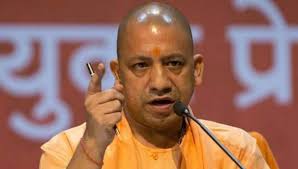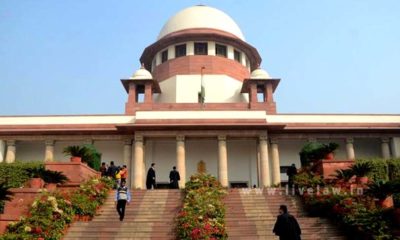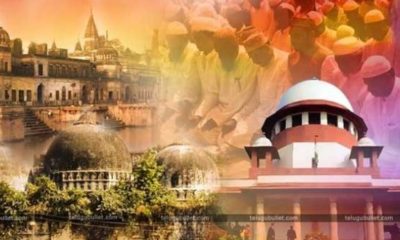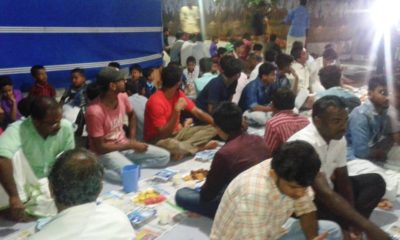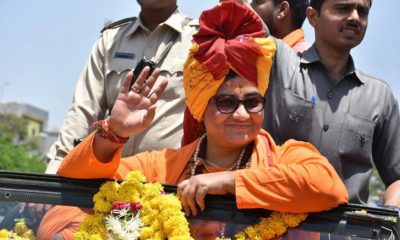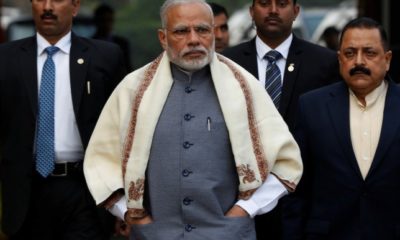Feature
All Babri demolition accused acquitted as act was ‘spontaneous’
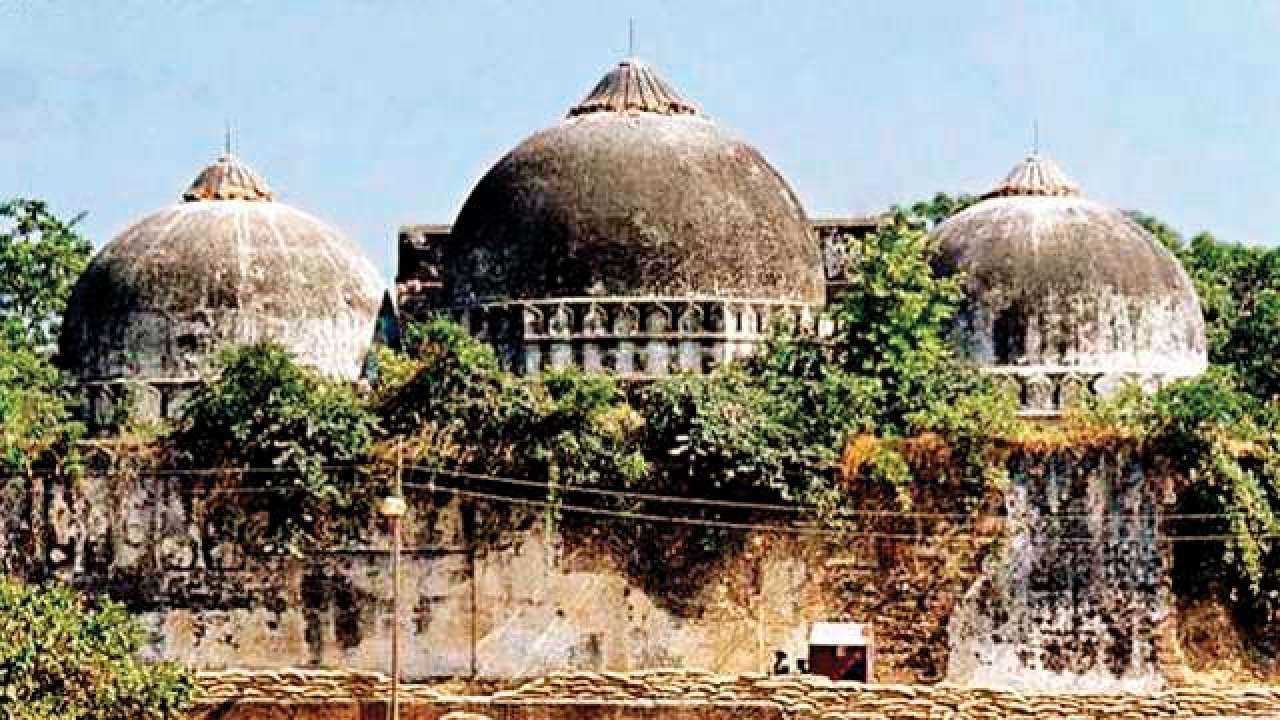
A Special CBI court hearing the Babri mosque demolition case of December 6, 1992, acquitted all the 32 accused on Wednesday saying it was spontaneous and not a planned move.
Those acquitted in the case that lasted 28 years include former Deputy Prime Minister L.K. Advani, former Union Ministers M.M. Joshi, Uma Bharti, former Uttar Pradesh Chief Minister Kalyan Singh and Mahant Nritya Gopal Das, among others.
Former BJP MP Vinay Katiyar and Hindu leader Sadhvi Rithambhara, who were among the accused present in court, said: “Sab Ramji ki kripa hai”.
As soon as the court announced the acquittal of the accused, jubilation broke out outside the court, in Ayodhya and Lucknow where supporters of the leaders were present to celebrate the occasion.
Special CBI judge S.K. Yadav, in his verdict, said that the demotion was not a planned incident but a spontaneous act.
He said that Ashok Singhal and other Sangh Parivar leaders wanted to save the structure as Ram Lalla statues were inside.
The court observed that leaders who were present on the dais repeatedly tried to persuade the ‘kar sewaks’ against taking any action on that day.
The court further said the CBI has failed to substantiate the charges levelled against the 32 accused persons. The court also said that the video recordings submitted to the court were ‘tampered with’.
The judge pointed out that the prosecution could not produce enough evidence against the accused.
He said that the authenticity of audio, video provided by CBI could not be proven and the audio of the speeches were not clear.
The court also said that those who climbed on the dome, were anti-social elements.
The 26 accused persons who were present in court on Wednesday, said that they had always maintained that the demotion was a conspiracy by the then Congress government.
Babri plaintiff, Iqbal Ansari, said in Ayodhya that after the Supreme Court ruled in favour of the Ram temple last year, the demolition case had lost its relevance.
“I welcome acquittal of the 32 persons by the court. There should be no further dispute on the matter,” he said.
Entertainment
Meghalaya Reserves Legalized Gambling and Sports Betting for Tourists

The State Scores Extra High on Gaming-Friendly Industry Index
Meghalaya scored 92.85 out of 100 possible points in a Gaming Industry Index and proved to be India’s most gaming-friendly state following its recent profound legislation changes over the field allowing land-based and online gaming, including games of chance, under a licensing regime.
The index by the UK India Business Council (UKIBC) uses a scale of 0 to 100 to measure the level of legalisation on gambling and betting achieved by a state based on the scores over a set of seven different games – lottery, horse racing, betting on sports, poker, rummy, casino and fantasy sports
Starting from February last year, Meghalaya became the third state in India’s northeast to legalise gambling and betting after Sikkim and Nagaland. After consultations with the UKIBC, the state proceeded with the adoption of the Meghalaya Regulation of Gaming Act, 2021 and the nullification of the Meghalaya Prevention of Gambling Act, 1970. Subsequently in December, the Meghalaya Regulation of Gaming Rules, 2021 were notified and came into force.
All for the Tourists
The move to legalise and license various forms of offline and online betting and gambling in Meghalaya is aimed at boosting tourism and creating jobs, and altogether raising taxation revenues for the northeastern state. At the same time, the opportunities to bet and gamble legally will be reserved only for tourists and visitors.
“We came out with a Gaming Act and subsequently framed the Regulation of Gaming Rules, 2021. The government will accordingly issue licenses to operate games of skill and chance, both online and offline,” said James P. K. Sangma, Meghalaya State Law and Taxation Minister speaking in the capital city of Shillong. “But the legalized gambling and gaming will only be for tourists and not residents of Meghalaya,” he continued.
To be allowed to play, tourists and people visiting the state for work or business purposes will have to prove their non-resident status by presenting appropriate documents, in a process similar to a bank KYC (Know Your Customer) procedure.
Meghalaya Reaches Out to a Vast Market
With 140 millions of people in India estimated to bet regularly on sports, and a total of 370 million desi bettors around prominent sporting events, as per data from one of the latest reports by Esse N Videri, Meghalaya is set to reach out and take a piece of a vast market.
Estimates on the financial value of India’s sports betting market, combined across all types of offline channels and online sports and cricket predictions and betting platforms, speak about amounts between $130 and $150 billion (roughly between ₹9.7 and ₹11.5 lakh crore).
Andhra Pradesh, Telangana and Delhi are shown to deliver the highest number of bettors and Meghalaya can count on substantial tourists flow from their betting circles. The sports betting communities of Karnataka, Maharashtra, Uttar Pradesh and Haryana are also not to be underestimated.
Among the sports, cricket is most popular, registering 68 percent of the total bet count analyzed by Esse N Videri. Football takes second position with 11 percent of the bets, followed by betting on FIFA at 7 percent and on eCricket at 5 percent. The last position in the Top 5 of popular sports for betting in India is taken by tennis with 3 percent of the bet count.
Local Citizens will Still have Their Teer Betting
Meghalaya residents will still be permitted to participate in teer betting over arrow-shooting results. Teer is a traditional method of gambling, somewhat similar to a lottery draw, and held under the rules of the Meghalaya Regulation of the Game of Arrow Shooting and the Sale of Teer Tickets Act, 2018.
Teer includes bettors wagering on the number of arrows that reach the target which is placed about 50 meters away from a team of 20 archers positioned in a semicircle.
The archers shoot volleys of arrows at the target for ten minutes, and players place their bets choosing a number between 0 and 99 trying to guess the last two digits of the number of arrows that successfully pierce the target.
If, for example, the number of hits is 256, anyone who has bet on 56 wins an amount eight times bigger than their wager.


